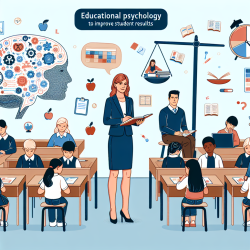Unlocking the Power of Evidence: Moving Beyond the "Critical Positivity Ratio" in Therapy
In the realm of speech-language pathology and therapy services, making data-driven decisions is crucial for achieving the best outcomes for children. A recent critical analysis, "Implications of Debunking the ‘Critical Positivity Ratio’ for Humanistic Psychology," sheds light on the importance of evidence-based practices over popularized yet unsupported theories.
The Myth of the Critical Positivity Ratio
The "Critical Positivity Ratio," once heralded as a groundbreaking discovery in positive psychology, suggested that a specific ratio of positive to negative emotions (2.9013) was the key to flourishing in various human systems. However, this claim has been debunked, revealing flaws in the mathematical basis and empirical evidence supporting it. The debunking highlights the necessity for practitioners to critically evaluate the scientific validity of the theories they apply.
Implications for Speech-Language Pathology
For practitioners in speech-language pathology, this debunking serves as a reminder of the importance of relying on robust, evidence-based practices rather than popularized concepts lacking scientific rigor. Here are key takeaways for improving therapy outcomes:
- Emphasize Evidence-Based Interventions: Prioritize interventions supported by strong empirical evidence. This ensures that therapy is grounded in proven methodologies rather than unsubstantiated claims.
- Critical Evaluation of New Theories: Stay informed and critically assess new theories and interventions. Scrutinize the scientific basis and empirical support before integrating them into practice.
- Focus on Individualized Care: Recognize the uniqueness of each child. Tailor interventions to their specific needs, rather than applying a one-size-fits-all approach based on generalized ratios or theories.
Encouraging Further Research
The debunking of the "Critical Positivity Ratio" also underscores the need for ongoing research in therapy practices. Practitioners are encouraged to engage in or support research initiatives that aim to explore and validate effective interventions. This commitment to research not only advances the field but also enhances the quality of care provided to children.
Conclusion
As we strive to create positive outcomes for children in therapy, it is essential to rely on evidence-based practices and maintain a critical eye towards popularized yet unsupported theories. By doing so, we ensure that our interventions are both scientifically sound and tailored to meet the individual needs of each child.
To read the original research paper, please follow this link: Implications of Debunking the “Critical Positivity Ratio” for Humanistic Psychology: Introduction to Special Issue.










